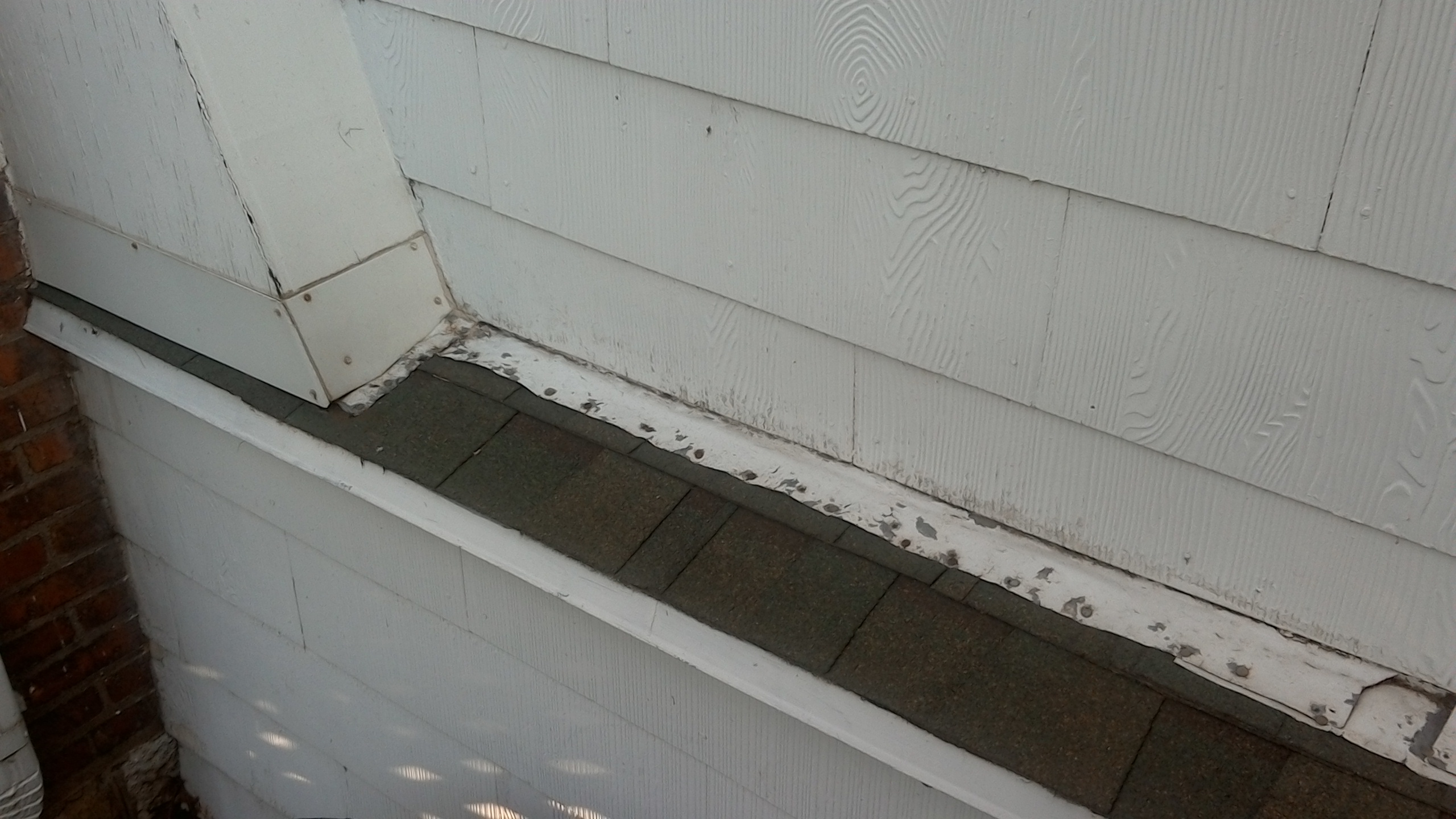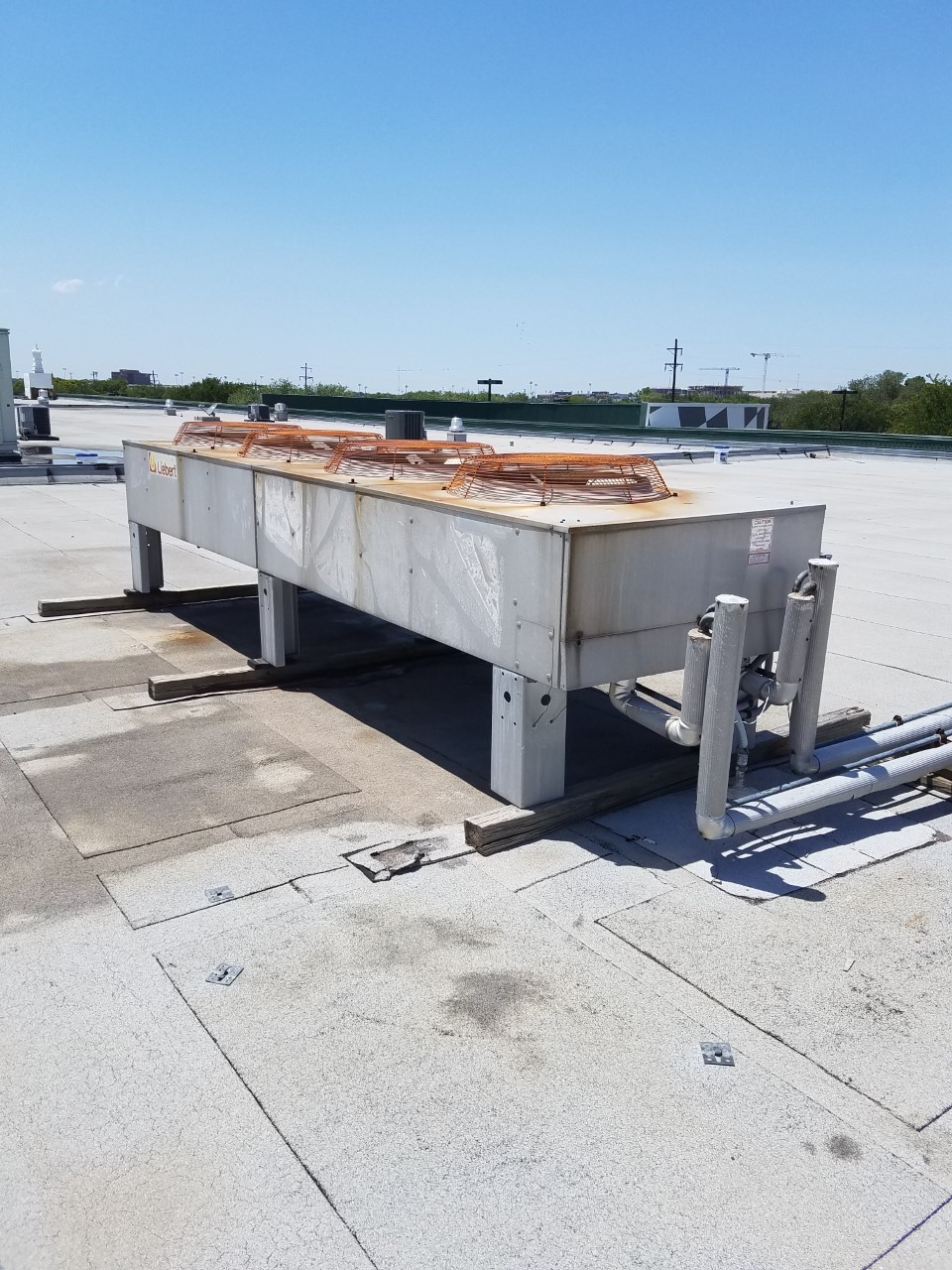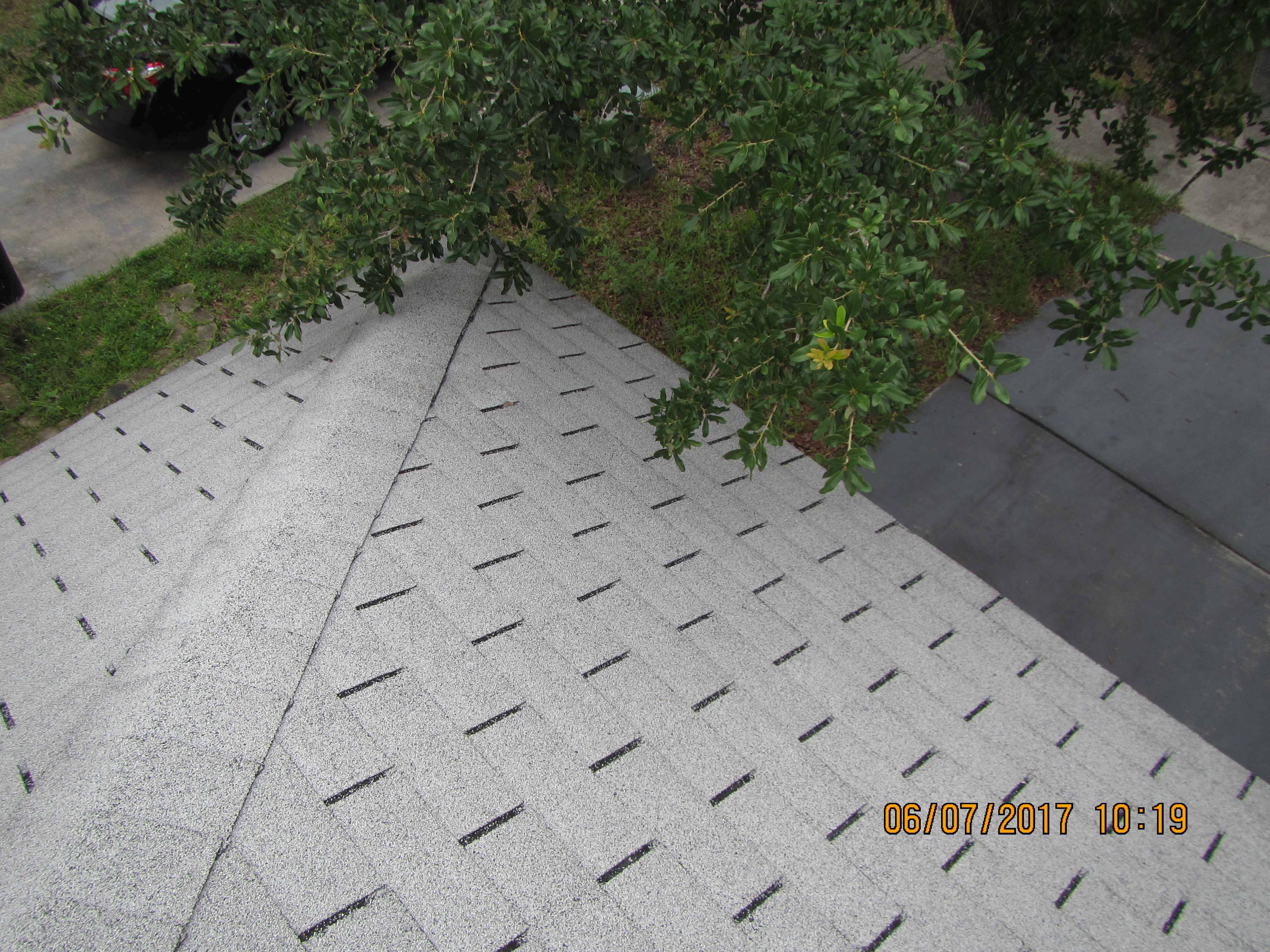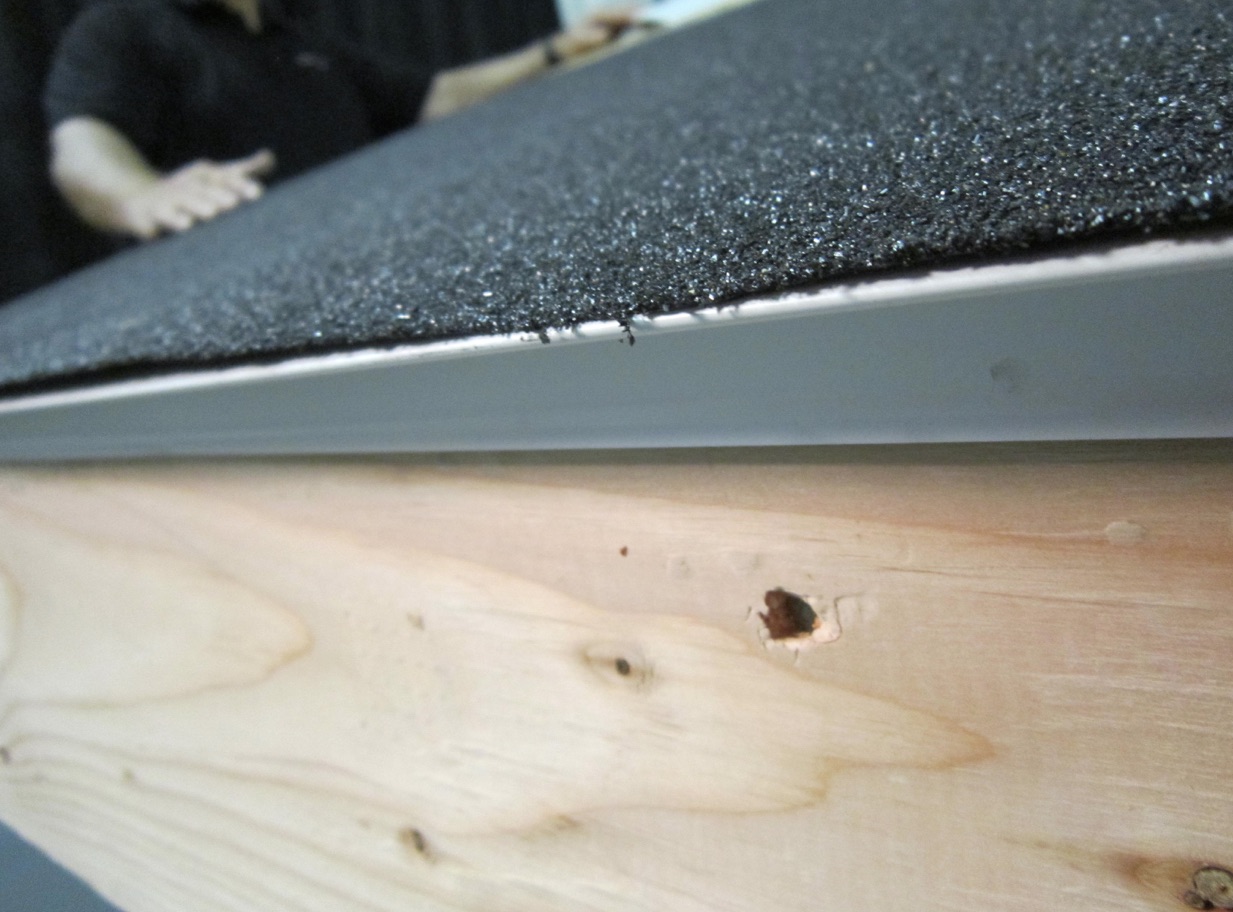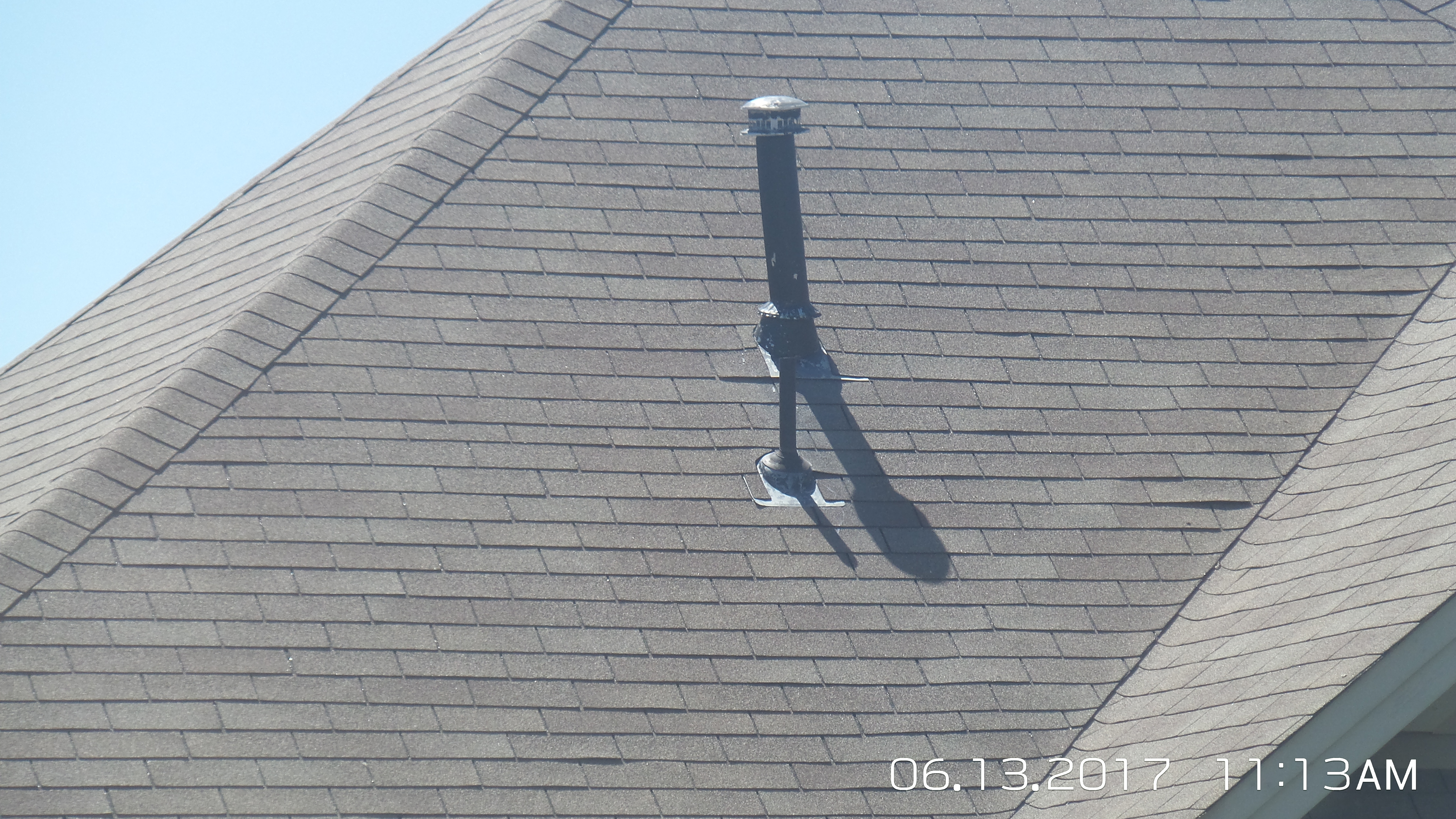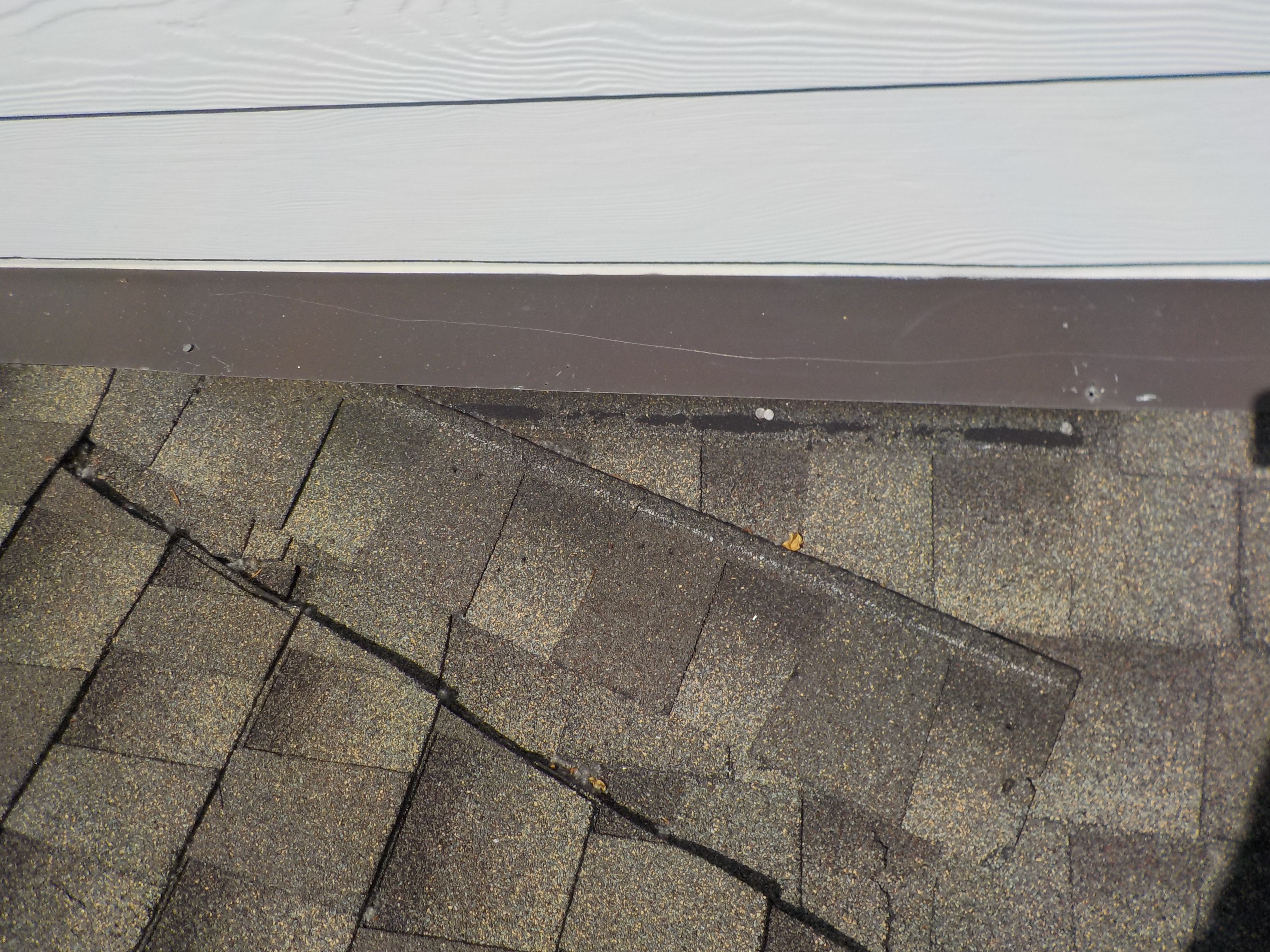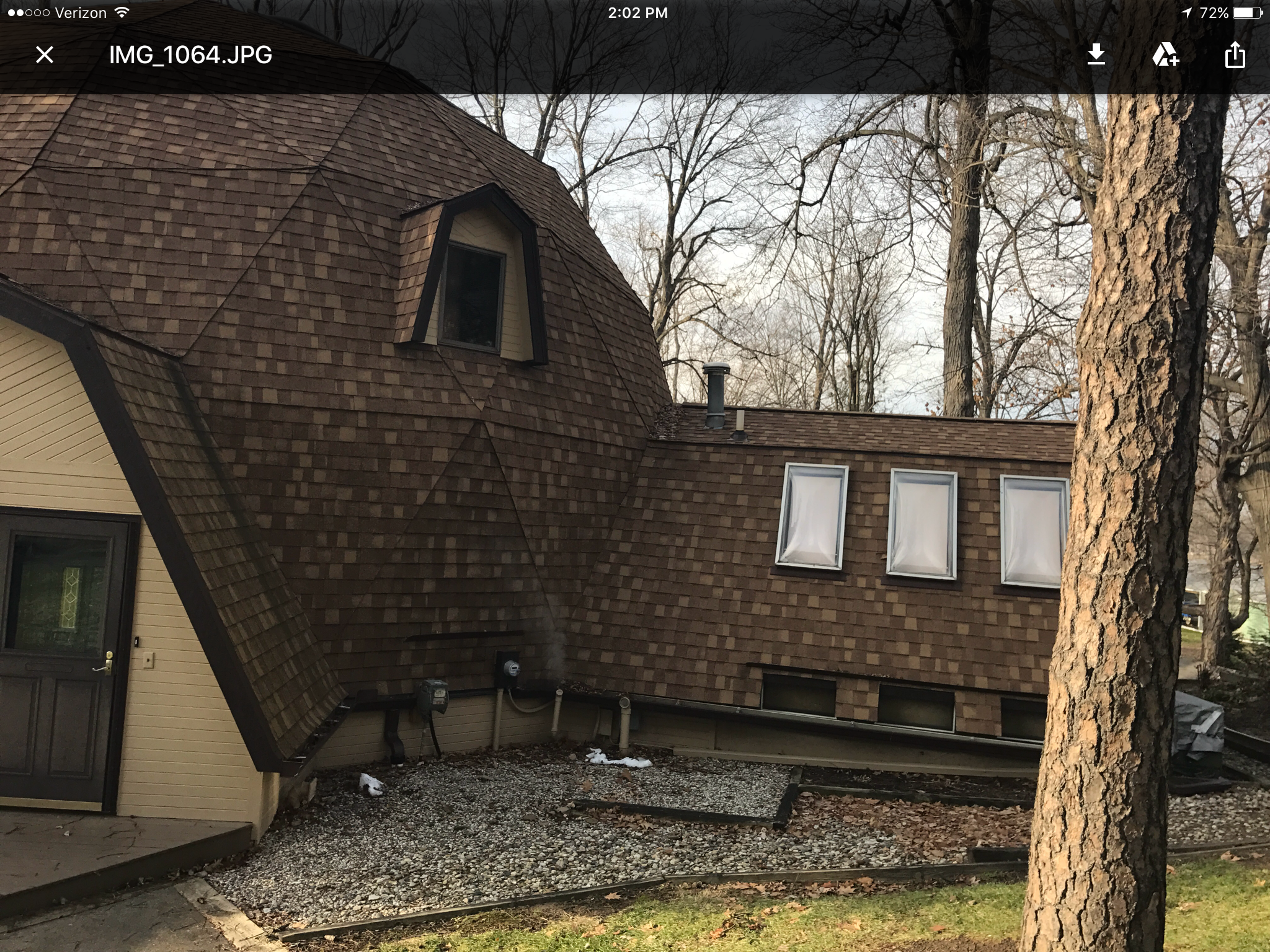A roof components. Starting with the trusses, then laying perpendicular the sheathing board (OSB,panel board, plank board), sheathing underlayment (over drip edge at hip and underlayment under rake drip edge),19" over each felt, underlayment starter at the eaves and then composite shingles or any exposure coverings (tile,cement, wood or shake shingles, steel, alum etc).
Performed inspection of gutters. Gutter material appears to be steel and appropriate for house requirements. No visible signs of any mechanical issues. All mounting of gutters and downspouts appear up to par. The down spout on southeast corner of garage does not have any extension to direct water away from foundation. May want to consider adding an extension
I have reviewed the article in regards to mold. I have learned that abrasive blasting can be done with many materials that I was defenitly not aware of. These materials included baking soda,corn cobs, and the one that intrigued me the most, dry ice.
This is a section of wall that is topped by some shingles and a poor flashing job. The flashing it’s self is somewhat acceptable, being galvanized steel installed over the shingles and under the siding. But there are multiple exposed nail heads that are not sealed and provide a direct leak path. They need to be properly sealed to prevent water entry.
I read an article on flashings. I learned that Spanish tile style roofs require a special type of flashing called pan flashing that goes under the end tile next to a sidewall. Most of the houses in my area have asphalt shingles but there are a few large old mansions that have Spanish tile roofs.
This is a flat top roll roof that has evidence of pounding ,in some areas the seams are splitting further review has shown soft areas, in the opinion of the inspector theses areas are not safe ,after checking the roof vents ,the inspection reveals separation of the roofing material.
The inspections reveals ponding on the flat top roll roof, this roof inspection has reveled separation on various seems ,on several of the roof penetration the inspection reveals separation of the roofing material ,this roof shows singes of multiple repairs .
House Numbers
Sounds like a simple thing. But this is truly a critical factor in ensuring that emergency services can locate a particular location when time is of the essence.
In some municipalities, ordinances have been established, and violators can be subject to fines and court fees.
These ordinances also create a standard for numbering to provide optimum visibility and ease of identification for first responders.
Some common elements include:
-Numbers must be reflective or be illuminated at night time hours.
- House numbers should contrast with the background.
-Character sizing recommendations are usually 3 to 6 inches high with sufficient thickness for easy viewing
-The number must be attached to the building and be clearly visible from the street. There cant be any obstructions such as trees, shrubbery or fixed/permanent objects
Even with the careful structuring of an ordinance, there can be pitfalls. For example, in my own neighborhood, the house numbers are required, but not all homes have numbers. Many homeowners rely on the number on the mailbox to guide first responders. This can be a problem, such as when the house is located on a corner lot, and the mailbox is located at the driveway. The mailbox has the correct address but is located on the other street. And in the time of an emergency, this can lead to delays at times when seconds count.
So, in case you havent gotten around to it, number your house today. And be sure to tell your friends, it could make the difference.
Air intake vents are used to allow outside air to enter into attics and ventilation spaces. Intake vents should be located along a roof assembly’s lowest eave at or near soffits or eaves. Intake vents are best used with exhaust vents that are located at or near a roof assembly’s peak. This configuration of ventilation air intake along low points and exhaust at high points takes advantage of natural convection.
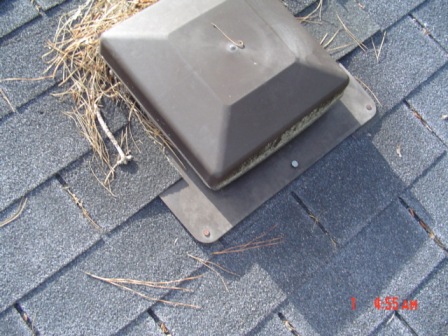
Intake vents always should be installed to allow free movement of air into the ventilation space and should not be blocked on the interior side by insulation or other material. Baffles placed between rafters keep insulation from blocking air intake. Intake vents must also be designed and installed to prevent precipitation, animals and insects from entering the ventilation space.
Roof and drainage system maintenance and replacement: Roof assessments are among the most valuable observations a home inspector can provide for a home buyer. Age of the roof and drainage system and the repairs done through the years could have a significant impact on price negotiations between the buyer and seller.
The roof inspection was performed from the roof level. I walked the (2) sections of the roof and found the following: The roof covering was 3 tab shingle with (9) missing shingles on the north section of the hip roof. There was no cricket on the back side of the chimney which was 36" wide.
The roof flashing is an important element to the weather protection of the structure. Step flashing on the second floor levels is usually missing. One of the flashing types that can decrease the chances of water infiltration is a counter flashing if installed correctly.
Ice Dams
An ice dam is a ridge of ice that forms at the edge of a roof and prevents melting snow from draining. As water backs up behind the dam, it can leak through the roof and cause damage to walls, ceilings, insulation and other areas. Ice dams form when snow on the roof melts, typically on the upper portion of the roof, and refreezes when it hits the lower portion of the roof which is colder than the upper portion. Water gets blocked by the ice dam then starts to back up under the shingles and edge flashing, causing moisture intrusion, a water ice barrier underlayment should be in place to prevent moisture intrusion…
when doing a home inspection on the roof, you should check the eave side for flashing. the underlayment should be on top of the flashing. The gutters would be installed on the fascia board under the flashing to allow water to drip in the gutter
When doing a Home Inspection in the attic, you should locate the dryer vent if it runs through the attic. The should terminate through the roof and not in the attic. The pipe should be sealed with HVAC Tin tape with 3 screws at the joints if it is ridged pipe and insulated.
Roof Material type
Asphalt shingles are the type of roofing material used to cover this roof. There is one layer of shingles and an underlayment to protect the sheathing. The type of shingles appear to be 3 tab shingles and appear to be installed correctly. The shingles are staggered and overlap each other adequately. I could not inspect the fasteners due to method of inspection, from the ground.
The photo shows a shingle that was found loose. There were several others located as well. Loose or improperly attached shingles will not function as designed and premature failure will occur. As I explained during the inspection, The shingle manufacturer may not honor the material warranty based on improper installation.
Items to look for when examining chimney flashings. Examine the head flashing. Check that the step flashing has a minimum 3" horizontal projection. Check the counter flashing. Check the apron flashing. All components should well fitting and free of damage or rust.
This is a picture of my vacation house that just had a new roof installed. The roof is 40 year asphalt architectural shingle. This roof is not designed to be walked,it was worked on by certified roofers. Please note all new gutters,flashing,and vents where replaced and sealed also new French drains installed to move water away from foundation.

